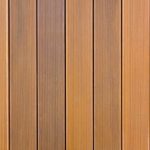Have you ever wanted to add a touch of mystery and intrigue to your woodworking projects? One way to achieve this is by incorporating a secret compartment into your designs. In this article, we will explore how to make a secret compartment in woodworking, including the best types of wood to use, different design options, tools and materials needed, step-by-step construction process, concealment techniques, finishing touches, and creative applications.
The allure of secret compartments in woodworking projects lies in the element of surprise and hidden functionality they provide. Whether it’s a concealed drawer within a jewelry box or a false bottom in a desk, these hidden compartments add an extra layer of complexity and interest to any piece. Not only do they serve as a practical storage solution, but they also capture the imagination of anyone who discovers them.
When it comes to choosing the right wood for constructing a secret compartment, considerations such as grain pattern, strength, and appearance play a crucial role. Different design options for secret compartments include hidden drawers within larger drawers, false bottoms in boxes or cabinets, and secret panels that blend seamlessly into the overall design.
With the right tools and materials and a step-by-step construction process, you can successfully create your own secret compartment that adds an air of mystery to your woodworking projects.
Choosing the Right Wood
When it comes to creating a secret compartment in woodworking, choosing the right wood is crucial for both the functionality and appearance of the finished piece. The type of wood used will impact the strength and durability of the compartment, as well as its visual appeal. Here are some considerations for selecting the best types of wood for constructing a secret compartment:
1. Oak: Known for its strength and durability, oak is a popular choice for constructing secret compartments. Its prominent grain pattern also adds a unique visual appeal to the compartment.
2. Cherry: Cherry wood is revered for its rich color and smooth grain, making it an excellent choice for creating hidden compartments within woodworking projects. It is important to select pieces with straight grain to ensure structural integrity.
3. Mahogany: With its reddish-brown hue and beautiful grain patterns, mahogany is a luxurious option for crafting secret compartments. It is essential to consider the density and weight of mahogany when designing a concealed storage space.
4. Maple: Maple wood offers a light, uniform appearance with minimal grain patterns, making it ideal for creating subtle yet functional secret compartments. Its stability and workability also make it a great choice for intricate designs.
When considering how to make a secret compartment in woodworking, it is important to carefully evaluate the characteristics of different woods to determine which best aligns with your project goals in terms of both aesthetic and practicality. By choosing the right wood, you can ensure that your secret compartment not only blends seamlessly into your overall woodworking project but also functions effectively for discreet storage.
Designing the Compartment
Designing a secret compartment in woodworking projects can add an element of intrigue and mystery to your finished piece. There are various design options to consider when creating a hidden compartment, each with its own unique appeal.
Hidden Compartments Within Drawers
One popular design option for a secret compartment is to incorporate it within a drawer. This can be achieved by constructing a false back or bottom within the drawer that provides access to the hidden space behind or beneath. Careful attention must be paid to ensure that the drawer still functions smoothly and without drawing unwanted attention to the secret compartment.
False Bottoms
Another classic design option for a secret compartment is to create a false bottom within the main structure of the woodworking piece. This can be achieved by constructing an additional layer that sits below the visible surface of the project, creating space for concealing valuables or personal items. The challenge in this design lies in seamlessly integrating the false bottom into the overall aesthetic of the piece while maintaining its functionality.
Secret Panels
For those looking for a more elaborate and theatrical approach, incorporating secret panels into a woodworking project can add drama and sophistication to the hidden compartment. This design option involves constructing sections of the project that pivot or slide open to reveal concealed storage spaces. Creating seamless pivot points and slides requires precision and careful planning, but can result in a truly impressive end product.
Understanding these different design options for secret compartments allows woodworkers to choose the best approach based on their specific project requirements, level of expertise, and desired aesthetic outcome.
Tools and Materials
When it comes to creating a secret compartment in woodworking, having the right tools and materials is crucial to ensure a successful and seamless construction. Here are some essential items you will need:
Tools
One of the most important tools you will need is a quality saw, such as a table saw or circular saw, to accurately cut the wood for your secret compartment. Additionally, chisels will be necessary for carving out the space within your woodworking project to create the hidden compartment. A screwdriver set and drill will also be required for attaching hinges and other hardware needed to secure the compartment.
Materials
The type of wood you choose for your secret compartment is crucial. You will want to select a sturdy and visually appealing wood that fits well with the overall aesthetic of your project. Oak, cherry, maple, and walnut are popular choices due to their strength and attractive grain patterns. In addition, hinges of various sizes and finishes will be necessary for ensuring smooth operation of the secret compartment.
Other Considerations
It is important to have safety equipment on hand when working with woodworking tools, such as safety goggles and work gloves. Additionally, having measuring tools like a tape measure or ruler will ensure precise cuts and dimensions for your secret compartment.
In this section, we have laid out all the essential tools and materials needed for creating a secret compartment in woodworking. It is important to gather these items before beginning any construction to ensure that the process goes smoothly from start to finish. By carefully selecting the right wood and obtaining the necessary hardware, you can create an intriguing hidden feature that adds an element of surprise to your woodworking projects.
Step-by-Step Construction
When creating a secret compartment in woodworking, the construction process is crucial to ensure that the compartment is seamlessly integrated into the overall project. Follow these steps to build a functional and well-hidden secret compartment:
1. Measure and cut the wood: The first step in constructing a secret compartment is to measure and cut the wood for the frame of the compartment. Use high-quality wood that matches the rest of your project, ensuring a seamless integration.
2. Assemble the frame: Once the wood is cut to size, assemble the frame of the compartment using precise joinery techniques such as dovetail or box joints. This will ensure a sturdy and durable structure for your secret compartment.
3. Secure the compartment: After assembling the frame, it’s time to secure the compartment within your woodworking project. Depending on your design, this may involve installing hinges or sliders to allow access to the hidden area.
It’s important to remember that precision and attention to detail are essential when constructing a secret compartment in woodworking. Taking your time at each step of the process will result in a well-crafted and functional hidden space for your project.
By following these steps, you can create a secret compartment that adds an element of intrigue and surprise to your woodworking projects while also providing practical storage or concealment options.
Overall, understanding how to make a secret compartment in woodworking involves careful planning and execution at every stage of construction, from measuring and cutting wood to securing the hidden space within your project.
Concealment Techniques
When it comes to incorporating secret compartments into woodworking projects, one of the key considerations is how to conceal the entrance to the compartment. There are several effective techniques that can be used to achieve this, adding an extra layer of intrigue and mystery to the finished piece.
One popular method for concealing the entrance to a secret compartment is by using magnetic closures. By installing magnets within the framework of the woodworking project, a hidden door or panel can be held securely closed until the magnet is activated, allowing for easy access to the compartment. This technique adds a seamless and virtually undetectable way to access the secret space.
Another effective technique for concealing secret compartments is through push-to-release mechanisms. These mechanisms involve creating a hidden button or lever that, when pushed or activated in a specific way, releases the lock or latch holding the compartment closed. This provides a discreet yet functional way to access the contents of the compartment while maintaining its secrecy.
In addition to magnetic closures and push-to-release mechanisms, other concealment techniques can also be utilized depending on the design and functionality of the secret compartment. The goal with any of these techniques is to create a concealed entrance that seamlessly integrates into the overall aesthetic of the woodworking project while providing secure and easy access when needed.
| Concealment Technique | Description |
|---|---|
| Magnetic Closures | Uses magnets within framework for hidden doors/panels |
| Push-to-Release Mechanisms | Utilizes hidden buttons/levers for releasing locks/latches |
Finishing and Polishing
Creating a secret compartment in woodworking adds an element of intrigue and mystery to any project. Once the compartment is designed and constructed, it’s crucial to seamlessly integrate it into the overall piece through finishing and polishing. Staining, varnishing, and other techniques will help ensure that the secret compartment blends in seamlessly with the rest of the woodworking project.
Staining is an essential part of finishing a woodworking project, including one with a secret compartment. It not only enhances the natural beauty of the wood but also helps conceal the entrance to the hidden compartment. When choosing a stain for your project, consider how it will complement the wood’s grain pattern and color. Darker stains are often used for creating a sense of depth and shadows that can further camouflage the existence of a secret compartment.
Varnishing is another important step in finishing a woodworking project with a secret compartment. A clear coat of varnish not only adds protection to the wood but also creates a smooth and polished surface.
This makes it more difficult for onlookers to detect any irregularities in the wood which could give away the presence of a hidden space within the piece. Additionally, varnishing helps to blend any seams or joints where access to the secret compartment is obtained, ensuring that it remains completely concealed from plain view.
| Secret Compartment Finishing | Techniques |
|---|---|
| Staining | Enhances natural beauty of wood and conceals entrance |
| Varnishing | Adds protection, hides irregularities, blends seams |
Creative Applications
In woodworking, the addition of a secret compartment can elevate a project from ordinary to extraordinary. Not only does it provide a sense of mystery and intrigue, but it also showcases the craftsmanship and attention to detail of the woodworker. By choosing the right wood, designing the compartment with precision, and utilizing concealment techniques, woodworkers can achieve a seamless and functional secret compartment in their projects.
When it comes to creating a secret compartment in woodworking, the type of wood chosen is crucial. The grain pattern, strength, and appearance all play a role in determining the success of the finished product. Additionally, careful consideration must be given to designing the compartment itself – whether it’s hidden within drawers, false bottoms, or secret panels. Each option presents its own unique challenges and opportunities for creativity.
The step-by-step construction process is essential in bringing the secret compartment to life. From cutting and assembling the frame to securing the compartment with hinges or other mechanisms, each detail must be meticulously executed for a successful outcome.
Furthermore, concealing the entrance to the secret compartment requires thoughtful planning and skillful implementation – whether through magnetic closures or push-to-release mechanisms. Ultimately, by mastering these techniques and applying them creatively to various woodworking projects such as jewelry boxes, desks, and cabinets, woodworkers can truly showcase their expertise and artistry.
Frequently Asked Questions
How Do You Make a Secret Stash Box?
Making a secret stash box can be a fun project. You can start by finding a small, inconspicuous box or container to use as the base. Then, consider adding a false bottom that can be easily lifted or removed to reveal the hidden compartment underneath.
How Do You Make a Secret Compartment in Your Room?
Creating a secret compartment in your room requires some creativity and ingenuity. You could hide valuable items in plain sight by using everyday objects like books with empty spaces inside, false wall outlets with hidden compartments, or even installing a hidden panel in the wall or floor.
How Do You Make a Fake Bottom Drawer?
Making a fake bottom drawer is an effective way to conceal items within furniture. This can be accomplished by constructing a new false bottom and securing it within the drawer using hinges, magnets, or locks. The key is to make it look seamless and indistinguishable from the original drawer bottom.

Hi everyone! I’m a woodworker and blogger, and this is my woodworking blog. In my blog, I share tips and tricks for woodworkers of all skill levels, as well as project ideas that you can try yourself.





